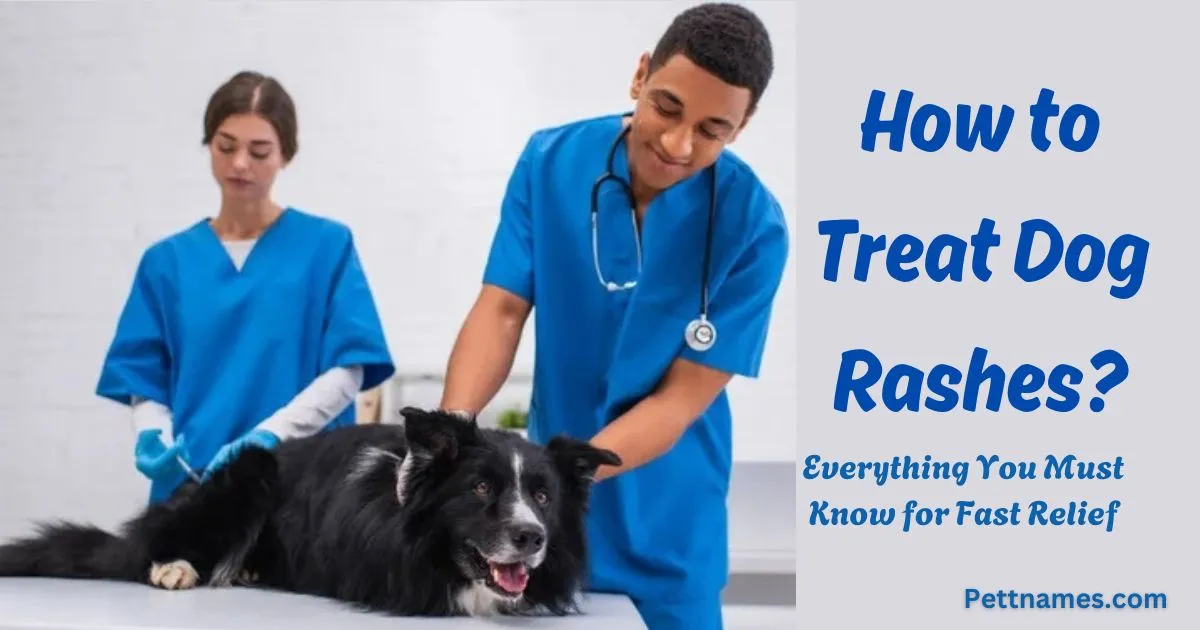How to Treat Dog Rashes: A Comprehensive Guide for Pet Owners
Dogs are not only man’s best friend, but they’re also susceptible to a variety of health issues, just like humans. One common problem that pet owners face is dog rashes. Whether your dog is itching, licking, or scratching, it could be a sign of a rash. Dog rashes can appear in various forms and can be caused by a wide range of factors. This article aims to provide a professional, easy-to-understand guide on how to treat dog rashes, ensuring the health and comfort of your furry friend.

Understanding Dog Rashes
Before jumping into treatment options, it’s important to understand the different types of dog rashes. Rashes are typically a symptom of an underlying condition, and identifying the root cause is crucial for effective treatment. Common causes of dog rashes include:
- Allergies – Dogs can suffer from allergies triggered by food, pollen, dust mites, or certain fabrics.
- Infections – Fungal or bacterial infections can cause rashes that are painful and itchy.
- Parasites – Fleas, ticks, and mites can cause rashes and severe discomfort.
- Dry Skin – A lack of moisture in the skin can lead to rashes, especially in colder weather.
- Hot Spots – These are localized areas of irritation that become inflamed and infected, often resulting in rashes.
Identifying the cause of the rash is the first step in providing proper treatment for your dog.
Signs and Symptoms of Dog Rashes
Rashes can manifest in various forms and may be accompanied by a variety of symptoms. Keep an eye out for:
- Red or inflamed patches of skin
- Excessive licking or biting of the affected area
- Hair loss around the rash
- Pustules or scabs
- Dry, flaky skin
- Foul odor (in case of infection)
If your dog shows any of these symptoms, it is important to take action immediately to relieve their discomfort.
you may also like:
Top 20 Pet Names for Dogs That You’ll Love and Adore
Step-by-Step Guide to Treating Dog Rashes
When it comes to treating dog rashes, the first step is to identify the cause. Once you’ve done that, follow these steps for an effective treatment plan.

1. Consult a Veterinarian
Before attempting to treat the rash at home, it’s always a good idea to consult with your veterinarian. A vet can help determine the underlying cause of the rash and provide a proper diagnosis. For some cases, a prescription treatment may be necessary, and early intervention can help prevent the condition from worsening.
2. Clean the Affected Area
To help soothe your dog’s skin, clean the affected area gently. Use a mild, pet-safe shampoo or a special antiseptic solution designed for dogs. Avoid using human products as they can be too harsh and may worsen the irritation.
Tip: When cleaning, be sure to rinse thoroughly to remove any soap or residue. Gently pat the skin dry with a soft towel to prevent further irritation.
3. Use Anti-Itch Medications
For rashes caused by itching, anti-itch medications such as hydrocortisone creams or sprays can provide relief. However, it’s important to use these products sparingly and according to the instructions on the label. Overuse can lead to side effects or worsen the rash.
Note: Always check with your vet before using any over-the-counter products on your dog.
4. Apply Natural Remedies
If your dog’s rash is mild, there are some natural remedies you can try at home to help alleviate discomfort:
- Aloe Vera Gel – Aloe vera has cooling properties that can help soothe irritated skin. Ensure the gel you use is free of alcohol or fragrances.
- Oatmeal Baths – Oatmeal is known for its skin-soothing properties. You can find pet-safe oatmeal shampoos or simply grind plain oatmeal into a fine powder and add it to your dog’s bathwater.
- Coconut Oil – Coconut oil has antifungal and antibacterial properties that can help moisturize dry skin and promote healing.
5. Keep Your Dog’s Skin Moisturized
Dry skin can exacerbate rashes, so it’s important to keep your dog’s skin moisturized. There are several pet-specific moisturizers available in stores, or you can apply a small amount of natural oils like olive oil or coconut oil directly to the rash.
6. Consider a Special Diet
In cases where food allergies are the culprit, switching your dog to a hypoallergenic diet can help reduce skin irritation. Consult your vet to determine if a food allergy could be causing your dog’s rash. They may recommend a special prescription diet or guide you in eliminating certain ingredients to pinpoint the allergen.
7. Treat Fleas and Parasites
If the rash is caused by fleas, ticks, or mites, it’s important to treat your dog for parasites immediately. Use flea and tick preventatives, and consider bathing your dog in a special medicated shampoo designed to kill parasites.
Tip: Be sure to regularly check your dog for fleas and ticks, especially if they spend a lot of time outdoors.
Preventing Dog Rashes
Prevention is always better than treatment. Here are some tips to help prevent future rashes:
- Maintain a Regular Grooming Routine – Brush your dog regularly to remove dirt, debris, and loose fur. This also helps in spotting potential rashes early.
- Keep Your Dog’s Skin Clean and Dry – Moisture can promote the growth of bacteria and fungi, so make sure to dry your dog thoroughly after baths or if they get wet in the rain.
- Avoid Known Allergens – If you know your dog is allergic to certain foods, grasses, or environmental factors, try to minimize exposure to these triggers.
- Use Quality Pet Products – Always use pet-safe shampoos, grooming tools, and medications that are free from harsh chemicals.
- Flea and Tick Prevention – Regular use of flea and tick prevention products can help keep these pests at bay and prevent rashes caused by their bites.
When to Seek Professional Help

While minor rashes can often be treated at home, there are situations where you should seek immediate veterinary help:
- If the rash worsens despite home treatment
- If your dog develops a fever or shows signs of being unwell
- If the rash spreads rapidly
- If your dog is in significant pain or discomfort
Conclusion: Keep Your Dog Comfortable and Healthy
Dog rashes are common but can be uncomfortable for your furry friend. By identifying the cause, using proper treatment methods, and taking steps to prevent rashes in the future, you can keep your dog happy and healthy. Whether the rash is caused by allergies, parasites, or infection, prompt attention can help ease their discomfort and ensure they recover quickly.
Remember, when in doubt, it’s always best to consult a veterinarian who can guide you through the treatment process. Your dog relies on you for care, and providing the right treatment ensures their well-being in the long run.


